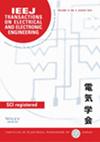Min Zhang, Jinhao Wang, Xiao Chang, Le Gao, Xiangyu Guo, Wenchu Tang, Hanwen Wang
求助PDF
{"title":"基于改进 k 形聚类的谐波污染分区方法","authors":"Min Zhang, Jinhao Wang, Xiao Chang, Le Gao, Xiangyu Guo, Wenchu Tang, Hanwen Wang","doi":"10.1002/tee.24179","DOIUrl":null,"url":null,"abstract":"<p>With access to many power electronic loads in a power network, the number of suspicious harmonic sources increases significantly, which makes it highly difficult to trace the position of such sources in the entire network. Starting from the engineering application of harmonic tracing and using power quality monitoring data, a harmonic zoning tracing scheme is proposed based on two-layer clustering. Based on the characteristics of harmonic measurement data, k-Shape, a time-series clustering algorithm based on waveform similarity is adopted. By calculating the morphological distance between the harmonic voltage sequences, the similarity of data fluctuation is measured, and the correlation information associated with harmonic pollution is mined. On this basis, adaptive density peak clustering is introduced to improve the k-Shape algorithm. It solves the local minimization problem caused by the random selection of initial clustering centers, and realizes the adaptive selection of the optimal number of clusters. The proposed method can effectively realize the regional positioning of multi-harmonic sources, reduce the suspected range of dominant harmonic sources, and is suitable for traceability analysis in the scenario of a large number of harmonic sources. The IEEE 123 node network and monitoring platform data confirm the practicality and effectiveness of the proposed method. © 2024 Institute of Electrical Engineers of Japan and Wiley Periodicals LLC.</p>","PeriodicalId":13435,"journal":{"name":"IEEJ Transactions on Electrical and Electronic Engineering","volume":"20 1","pages":"50-60"},"PeriodicalIF":1.0000,"publicationDate":"2024-08-09","publicationTypes":"Journal Article","fieldsOfStudy":null,"isOpenAccess":false,"openAccessPdf":"","citationCount":"0","resultStr":"{\"title\":\"Harmonic Pollution Zoning Method Based on Improved k-Shape Clustering\",\"authors\":\"Min Zhang, Jinhao Wang, Xiao Chang, Le Gao, Xiangyu Guo, Wenchu Tang, Hanwen Wang\",\"doi\":\"10.1002/tee.24179\",\"DOIUrl\":null,\"url\":null,\"abstract\":\"<p>With access to many power electronic loads in a power network, the number of suspicious harmonic sources increases significantly, which makes it highly difficult to trace the position of such sources in the entire network. Starting from the engineering application of harmonic tracing and using power quality monitoring data, a harmonic zoning tracing scheme is proposed based on two-layer clustering. Based on the characteristics of harmonic measurement data, k-Shape, a time-series clustering algorithm based on waveform similarity is adopted. By calculating the morphological distance between the harmonic voltage sequences, the similarity of data fluctuation is measured, and the correlation information associated with harmonic pollution is mined. On this basis, adaptive density peak clustering is introduced to improve the k-Shape algorithm. It solves the local minimization problem caused by the random selection of initial clustering centers, and realizes the adaptive selection of the optimal number of clusters. The proposed method can effectively realize the regional positioning of multi-harmonic sources, reduce the suspected range of dominant harmonic sources, and is suitable for traceability analysis in the scenario of a large number of harmonic sources. The IEEE 123 node network and monitoring platform data confirm the practicality and effectiveness of the proposed method. © 2024 Institute of Electrical Engineers of Japan and Wiley Periodicals LLC.</p>\",\"PeriodicalId\":13435,\"journal\":{\"name\":\"IEEJ Transactions on Electrical and Electronic Engineering\",\"volume\":\"20 1\",\"pages\":\"50-60\"},\"PeriodicalIF\":1.0000,\"publicationDate\":\"2024-08-09\",\"publicationTypes\":\"Journal Article\",\"fieldsOfStudy\":null,\"isOpenAccess\":false,\"openAccessPdf\":\"\",\"citationCount\":\"0\",\"resultStr\":null,\"platform\":\"Semanticscholar\",\"paperid\":null,\"PeriodicalName\":\"IEEJ Transactions on Electrical and Electronic Engineering\",\"FirstCategoryId\":\"5\",\"ListUrlMain\":\"https://onlinelibrary.wiley.com/doi/10.1002/tee.24179\",\"RegionNum\":4,\"RegionCategory\":\"工程技术\",\"ArticlePicture\":[],\"TitleCN\":null,\"AbstractTextCN\":null,\"PMCID\":null,\"EPubDate\":\"\",\"PubModel\":\"\",\"JCR\":\"Q4\",\"JCRName\":\"ENGINEERING, ELECTRICAL & ELECTRONIC\",\"Score\":null,\"Total\":0}","platform":"Semanticscholar","paperid":null,"PeriodicalName":"IEEJ Transactions on Electrical and Electronic Engineering","FirstCategoryId":"5","ListUrlMain":"https://onlinelibrary.wiley.com/doi/10.1002/tee.24179","RegionNum":4,"RegionCategory":"工程技术","ArticlePicture":[],"TitleCN":null,"AbstractTextCN":null,"PMCID":null,"EPubDate":"","PubModel":"","JCR":"Q4","JCRName":"ENGINEERING, ELECTRICAL & ELECTRONIC","Score":null,"Total":0}
引用次数: 0
引用
批量引用

 求助内容:
求助内容: 应助结果提醒方式:
应助结果提醒方式:


